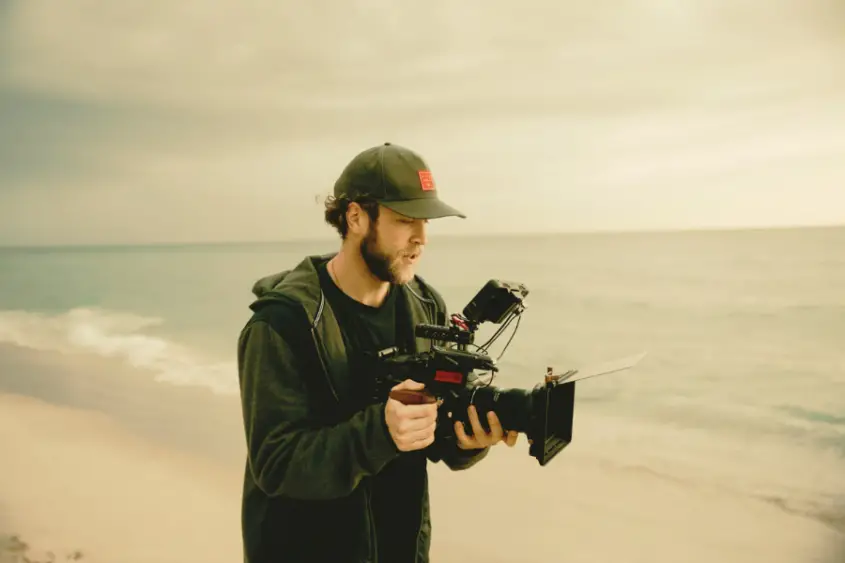The first time my friend held a camera, it wasn’t his. It belonged to his college roommate — a cheap DSLR that made a strange clicking sound whenever it focused. He didn’t know what he was doing. The white balance was off, the audio unusable, and the story — if there was one — was buried somewhere between awkward jump cuts and overexposed frames. But when he watched the footage later that night, something shifted. It didn’t look good. But it felt right. It was the beginning of his journey to learn filmmaking online — using whatever tools, tutorials, and scraps of guidance he could find.
This is how many filmmakers begin: not with a classroom or a curriculum, but with curiosity and a sense of urgency. Today, more than ever, that instinct is enough to get started. And the tools are no longer locked behind industry doors. You don’t need permission to learn or a studio to create. You need time, intention, and a willingness to figure things out — sometimes poorly, often alone.
This guide is for those who’ve felt that same shift. Whether you want to direct, shoot, edit, or simply understand what makes a film work, the online world is full of opportunities — if you know where to look.
In This Article
- Do You Really Need Film School?
- Free Resources That Actually Teach
- Free Filmmaking Courses/Providers
- Paid Platforms To Learn Filmmaking
- Filmmaking Curriculum (For Beginners)
- Watch Movies Like a Filmmaker
- Building Your Week as a Self-Taught Film Student
- Real Filmmakers Who Learned Online
- Career Paths for Self-Taught Filmmakers
- Frequently Asked Questions
- When a Formal Degree Makes Sense
- Conclusion
Do You Really Need Film School?
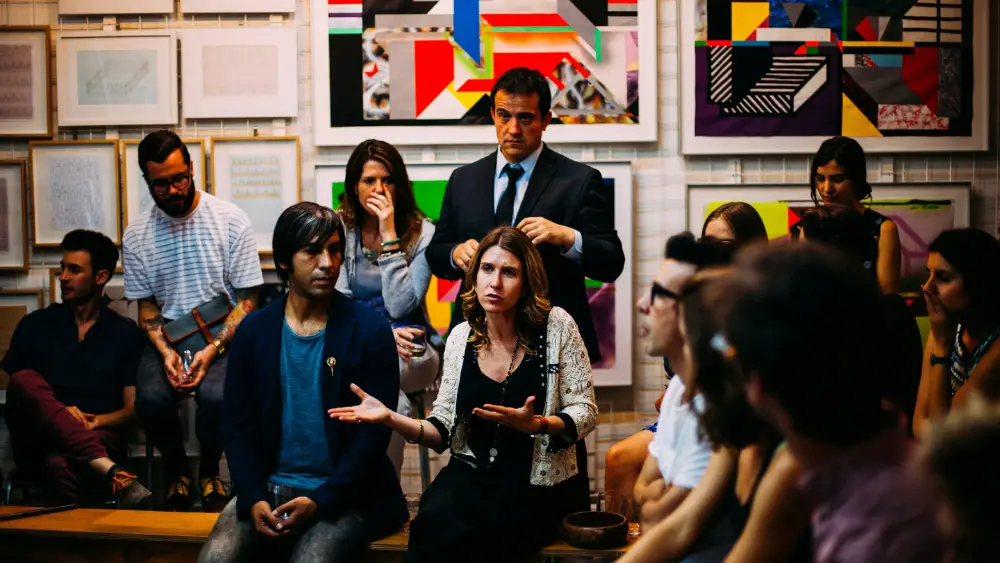
Let’s get the existential crisis out of the way. The question is old, but not outdated: Do I need to go to film school — or are there credible film school alternatives for the self-taught filmmaker?
Film school offers structure, mentorship, and gear — sure. But it also comes with a hefty bill and a sometimes outdated curriculum. Online learning, by contrast, is cheaper, more flexible, and arguably more aligned with the way filmmakers actually work now: fast, remote, collaborative.
Here’s the real answer: You need education, not necessarily an institution.
Pros of Online Learning:
- Learn at your own pace: You don’t need to stick to anyone else’s schedule. Whether you’re someone who works nights or squeezes in time on weekends, your education can fit around your life.
- Affordable (or free): Most online resources are either free or cost a fraction of traditional film school tuition.
- Hyper-specific skills: Want to learn only lighting? Or editing on DaVinci Resolve? Online, you can focus deeply on just what you need.
Cons:
- No access to physical gear: Unless you invest in your own equipment, you may miss hands-on learning with professional tools.
- Limited in-person collaboration: Film is collaborative by nature, and it can be harder to build those team dynamics virtually.
- No structured feedback: Without instructors or peers, you’ll need to actively seek critique through online forums or film communities.
If you still can’t decide, begin online. If you find yourself craving real sets and sweaty grip work, you can always apply to a film school of your choice and budget. But if you begin by learning online, you’ll get more out of your film school, because you’ll have already done the homework.
I’ve got a bunch of resources to share as we go, so feel free to bookmark this — it’ll be a handy pit stop on your filmmaking journey.
Free Resources That Actually Teach
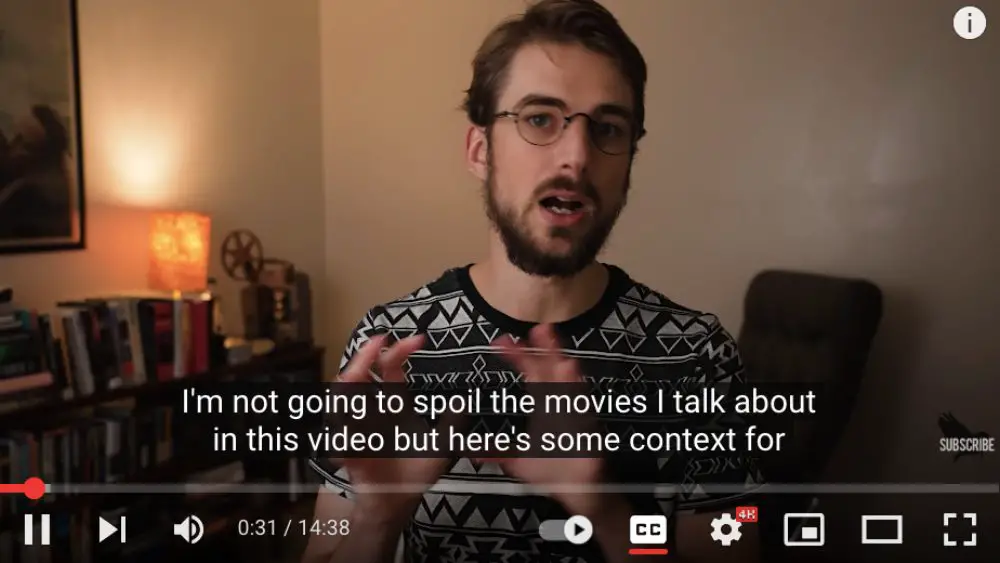
Not everyone can afford tuition, gear, or a studio to experiment in—but filmmaking knowledge is no longer reserved for those with access. There are a ton of free resources to help you get started, develop your voice, and refine your craft.
1. YouTube Channels
Scriptwriting & Visual Storytelling
Lessons from the Screenplay – Breaks down why great scripts work — from character development to plot tension and theme.
Paul E.T. – Breaks down how specific scenes or films achieve emotional effects using pacing, camera movement, or music — like “How movies make you cry.”
Every Frame a Painting – An iconic video essay series that analyzes the invisible craft behind film editing, blocking, silence, and pacing. Essential viewing for understanding film language.
Thomas Flight – A more current, cerebral channel that explores how editing, composition, and rhythm affect meaning. His essays often dissect modern films and TV through the lens of form and emotion.
Standard Story Co. – Shares practical advice on writing for short films, focusing on structure, subtext, and turning concepts into scripts. If dialogue feels like your biggest challenge, check out our guide on how to write great dialogue for actionable tips.
Film Courage – Features interviews with screenwriters and filmmakers sharing unfiltered advice about writing, career challenges, and industry survival.
Nerdwriter – Analytical essays that unpack visual language, shot construction, and subtext in cinema and television.
Cinematography & Lighting
Wandering DP – Run by cinematographer Patrick O’Sullivan, this channel breaks down lighting setups, shot blocking, and location work for real-world DPs.
Suyeol Jang, JSC (Suyoru) – Focuses on visual storytelling and mood-building through short film cinematography, especially with limited gear.
In Depth Cine – Offers deep-dive commentary on cinematography, lensing, and lighting setups used in popular short and feature films.
Jacques Crafford – Shares detailed BTS tutorials and cinematic breakdowns for run-and-gun, documentary-style, and narrative short films.
Lewis Potts – Offers behind-the-scene breakdowns of his own short films, covering cinematography, lighting setups, and camera rigs.
Editing &Post-Production
This Guy Edits – Run by a professional film editor who shares real-time editing breakdowns, pacing principles, and decision-making processes.
Eric Lenz – Offers high-level tutorials on color grading techniques using DaVinci Resolve, focusing on mood, LUTs, and color theory.
Jason Yadlovski – Offers highly focused DaVinci Resolve tutorials, especially around editing, motion graphics, and sound design.
The Qazman – Offers editing and color grading breakdowns with a focus on storytelling in DaVinci Resolve and Final Cut workflows.
The Editing Podcast – A podcast-style channel that dissects the storytelling power of editing and how editors shape emotional beats and rhythm.
Sound & Gear
Curtis Judd – Deep dives into lighting kits, lav mics, and audio equipment — perfect for indie filmmakers working with modest gear.
Full Time Filmmaker – Focuses on filmmaking gear, camera comparisons, and techniques for creating cinematic footage on a budget.
Scott Prop and Roll – Shares how film props are made and used on set, ideal for filmmakers interested in art direction or world-building.
Filmmaking/Overall
Indy Mogul – Hands-on tutorials with working filmmakers showing how to achieve pro-level results with indie budgets.
Andyax – Offers practical, well-explained tutorials on directing, lighting, camera movement, and indie filmmaking workflows.
Film Riot – Combines fun with practicality, offering special effects tutorials, DIY gear hacks, and on-set tricks for indie filmmakers.
2. Free Filmmaking Courses/Providers
1. MIT OpenCourseWare
MIT OpenCourseWare offers free, university-level courses that explore both the theory and practice of filmmaking. While the platform leans slightly more toward academic and analytical approaches—covering media theory, film history, and narrative analysis—it also includes hands-on instruction in video production, editing, and storytelling fundamentals through archived syllabi and assignments.
2. FutureLearn
For starters looking for no-cost options, FutureLearn has a handful of thoughtful, well-designed options. The British Film Institute’s How to Make a Short Film walks you through the fundamentals of planning, shooting, and editing a short. An Introduction to Screenwriting from the University of East Anglia focuses on dialogue, structure, and building believable characters. For those curious about digital tools, Introduction to 3D for Screen Production explains how 3D environments are created for film and TV. And Introduction to Production Design for Film and Screen explores how set design, props, and visual detail shape the emotional tone of a scene.
3. Coursera
Coursera offers a mix of filmmaking and film-adjacent courses from universities like Michigan State, Wesleyan, and Berklee. Some lean more theoretical—film analysis, story structure—while others walk you through hands-on skills like script development or visual storytelling. A few standout options include Write a Feature-Length Screenplay and Photography Basics and Beyond from Michigan State, The Craft of Plot from Wesleyan, The Art of Visual Storytelling from the University of Colorado Boulder, and The Business of Music Production from Berklee.
Other platforms like edX, which hosts courses from institutions like Harvard and MIT, focus more on visual culture, narrative structure, and media theory. Stanford, UCLA, and Columbia occasionally release lectures and masterclasses on YouTube, while the Open University offers accessible introductions to media and film analysis.
StudioBinder has an excellent collection of free filmmaking tutorials, covering pre-production, shot lists, directing, and on-set workflows — all designed with real-world production in mind.
3. Free Podcasts

1. Cinematography – Team Deakins
Hosted by the legendary Roger Deakins and his wife James, this podcast is a masterclass in visual storytelling. Guests include top DPs, gaffers, directors, and editors. (For insights straight from pros, read what top cinematographers say about their craft).
Best for: Lighting, composition, on-set collaboration
2. Screenwriting – ScriptNotes
Hosted by John August (Big Fish) and Craig Mazin (Chernobyl), this long-running podcast explores the craft and business of screenwriting with wit and deep industry knowledge.
Best for: Story structure, rewriting, working in writers’ rooms
3. Directing/Filmmaking (Overall) – The Director’s Cut (by DGA)
The official podcast of the Directors Guild of America, features interviews with major filmmakers about their process. Episodes often come from festival panels or awards screenings.
Best for: Directing process, scene breakdowns, career insight
4. Editing – Art of the Cut
Editor Steve Hullfish interviews the world’s best film and TV editors (from The Social Network to Game of Thrones), unpacking the invisible craft behind storytelling.
Best for: Pacing, rhythm, post-production insights.
5. Indie Filmmaking / Production – Indie Film Hustle
Alex Ferrari offers blunt, practical advice for making films on a budget, getting distribution, and navigating the business. A go-to for self-funded and scrappy filmmakers.
Best for: DIY film production, career survival, real talk
No Film School, The Wandering DP, BBC iPlayer (only available in the UK) are other great podcasts worth your time.
| Podcast | Focus Area | Why It’s Great |
|---|---|---|
| Team Deakins | Cinematography | Hosted by Roger Deakins. Focuses on lighting, blocking, and storytelling through images. |
| ScriptNotes | Screenwriting | Practical advice on structure, rewriting, and the industry from working writers. |
| The Director’s Cut (DGA) | Directing | Festival Q&As and process breakdowns from top directors. |
| Art of the Cut | Editing | Interviews with editors of major films/series on craft and intuition. |
| Indie Film Hustle | DIY Production | Real-world survival tips for self-funded filmmakers and indie producers. |
4. Script Libraries
- IMSDb.com: The Internet Movie Script Database holds hundreds of classic and modern scripts. Read them to understand pacing, structure, and dialogue.
- Go Into The Story: Scott Meyer’s blog delves into the craft and business of screenwriting—covering story structure, character development, industry insights, and writing discipline. A resource-rich platform for newbie and working writers looking to sharpen their storytelling skills.
These are your free mentors. Plug in. Take notes. Rewatch. You can build a solid foundation just with what’s already out there.
Pair your course learning with deeper reads — here’s a roundup of 15 must-read books for aspiring filmmakers covering story, structure, and visual thinking.
Best Paid Online Filmmaking Courses (2025)
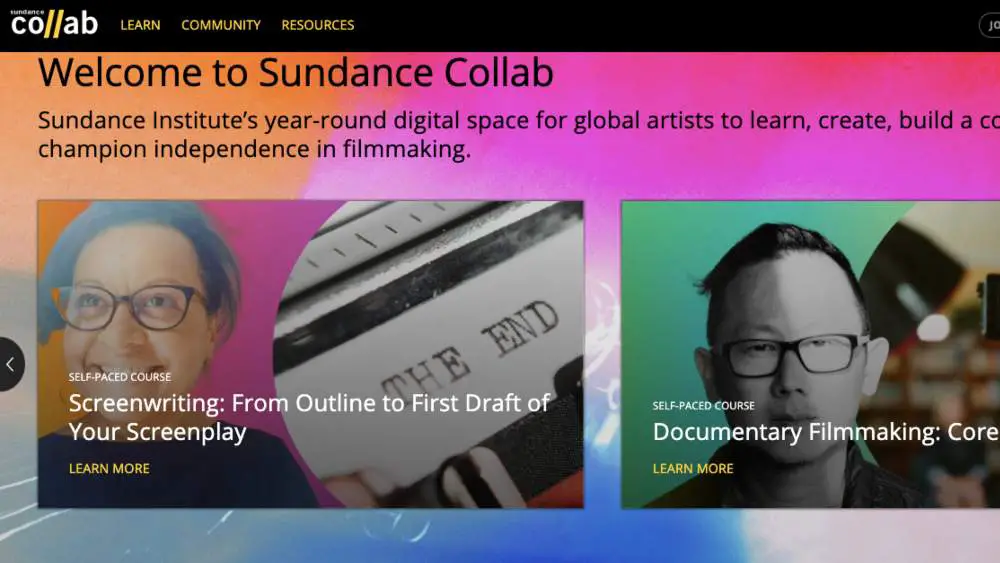
Once you’ve explored the free options, you may want more structure — that’s where online filmmaking courses come in. These are paid tools to help you learn filmmaking online with more accountability.
1. Sundance Collab
Backed by the Sundance Institute, Sundance Collab offers courses in directing, screenwriting, and producing, taught by working professionals and Sundance alumni. Get access to a rich video library of filmmaker talks and case studies. With opportunities for feedback, labs, and fellowships, it’s ideal for those on a serious creative path.
2. MasterClass
MasterClass features established filmmakers who share their philosophies and storytelling approaches. It’s high on inspiration and process, offering beautifully produced lessons on tone, pacing, and creative instinct. Best for those seeking big-picture thinking from masters of the craft.
David Mamet has spent over 50 years teaching dramatic writing and filmmaking. His class is a solid starting point — covering the fundamentals of where drama originates and why that foundation matters. Aaron Sorkin’s course dives into screenplay structure, character arcs, and writing dialogue that crackles.
Spike Lee offers an alternative to classical route — he writes on index cards, shuffling them until a story begins to take shape. Werner Herzog will teach you to process it all in your head and only start writing once it makes sense. (I used Herzog’s approach to write four drafts of a 107-page screenplay in eight ten-hour sessions.)
Judd Apatow’s class is great for writing comedy and shaping memorable scenes. Steve Martin’s is also comedy-focused — a bit more foundational, but full of wisdom drawn from experience. David Lynch is essential if you’re drawn to abstract, dreamlike storytelling. Scorsese, meanwhile, is less about writing and more about direction — but watching him geek out on technique is worth it.
Order to watch: David Mamet, Aaron Sorkin, Spike Lee, Werner Herzog, Judd Apatow, Steve Martin, David Lynch, Martin Scorsese.
3. StudioBinder
StudioBinder is a goldmine for filmmakers focused on the production side. It covers shot lists, call sheets, pre-production planning, and directing workflows. With clean visuals and practical tools, it’s a great platform for understanding the logistics and structure of film shoots—from indie sets to commercial productions.
Other platforms like MZed Pro, Skillshare, Udemy, FutureLearn, and Coursera round out the options. Skillshare is beginner-friendly and hands-on; MZed Pro is excellent for cinematography; FutureLearn and Coursera bring academic depth. Udemy is a mixed bag—affordable, but quality varies. Each offers value depending on your learning goals and style.
6-Month Filmmaking Curriculum (For Beginners)
The beauty of self-education is that you can shape your learning around your interests. But that flexibility also makes it easy to procrastinate or get lost in rabbit holes. A simple structure helps.
Whether you’re learning how to make your first short film or refining core visual storytelling skills, this roadmap will come in handy.
Month 1-2: Foundation and Visual Language
Start with the basics: What is a shot? What makes a scene flow? Spend time learning about framing, rule of thirds, shot types, and movement. Complement this with classic film theory and history lessons from free courses. Watch one film a day, but watch actively. Pause, take notes, sketch out scenes, and notice choices—camera angles, lighting, pacing.
Month 3-4: Practice and Short Films
By now, you should be itching to create. Begin with simple projects: a one-minute dialogue scene, a silent story using only visuals, or recreating a scene from a favorite film. Use whatever gear you have, even your phone. Study basic editing software like DaVinci Resolve. Cut, experiment, and learn how rhythm affects the story.
Month 5-6: Specialization and Feedback Loops
Choose a focus—cinematography, writing, sound, or editing. Study deeply. Start networking online. Join a Discord server, submit to small online contests, or seek feedback in forums. The goal now is refinement.
This timeline isn’t sacred. It’s scaffolding. Adjust based on your time, curiosity, and goals.
| Month | Focus Area | What to Do |
|---|---|---|
| Month 1–2 | Foundation & Visual Language | Learn shot types, composition, movement. Watch a film daily and analyze. Take intro theory/history courses (MIT OCW, Coursera). |
| Month 3–4 | Practice & Short Films | Recreate scenes, shoot short projects. Edit using DaVinci Resolve. Focus on storytelling through visuals. |
| Month 5–6 | Specialization & Feedback | Pick a niche (cinematography, editing, writing). Join forums, submit to contests, and refine a portfolio piece. |
Watch Movies Like a Filmmaker
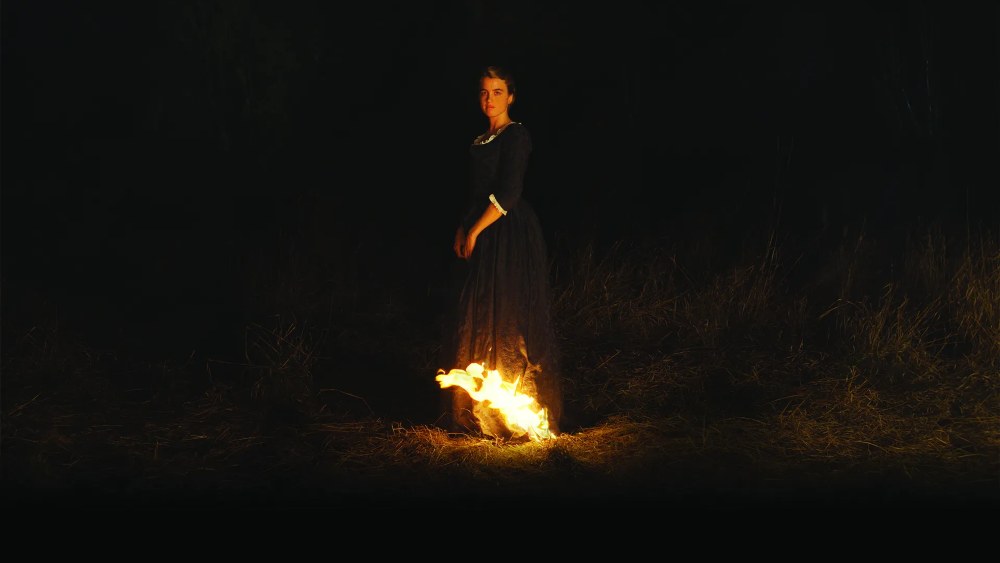
“Something that you should be especially careful about — and this is a point that beginners tend to neglect — is watching films. You must watch films. Not just the ones you like, but all kinds. And you should watch them not once, but again and again.”
— Akira Kurosawa, from his book “Something Like an Autobiography”
Watching as a viewer is passive. But learning how to study films like a filmmaker transforms every scene into a lesson in craft.
Pay attention to blocking in domestic dramas, like Marriage Story, where spatial relationships reveal emotional tension. Study the lighting in films like In the Mood for Love or Portrait of a Lady on Fire, where color and shadow are more than visual mood—they’re narrative.
Sync scripts with finished films to understand pacing. Notice how written scenes become visual. Commentary tracks, especially those from editors and cinematographers, offer insights often skipped in interviews.
For a more structured breakdown of scenes, check out The New York Times’ Anatomy of a Scene. In this video series, notable directors narrate key scenes from their films, explaining their choices in framing, editing, and performance — a goldmine for anyone learning how directors think visually.
And watch widely. Don’t stick to a single region or era. Japanese postwar cinema, Italian Neorealism, and the French New Wave — each offers a different cinematic grammar. Think of it as learning new dialects in the same language.
But before diving into director commentaries or script comparisons, watch 40 Days to Learn Film — a poetic, 40-part video series by Mark Cousins (The Story of Film, 2020), created during lockdown. Each essay explores a different aspect of filmmaking: framing, rhythm, movement, sound, memory. It’s less of a tutorial and more of an invitation to see movies — and the world — differently.
Building Your Week as a Self-Taught Film Student
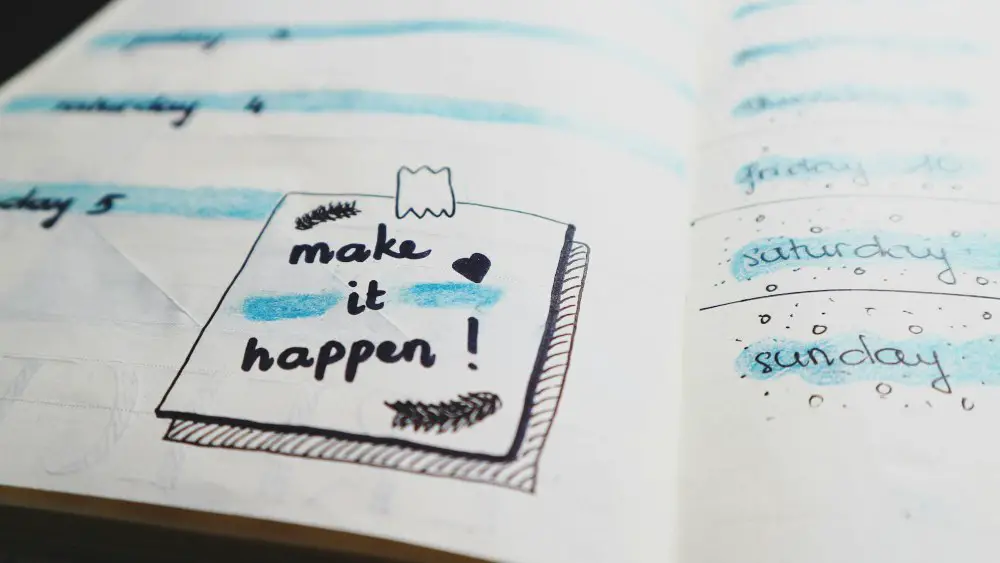
Consistency beats intensity. Here’s how a productive week might look:
- Monday: Watch a film with intention. Break down one scene in writing or sketches. Reflect on how it made you feel and why.
- Tuesday: Follow one lesson from a course or tutorial series. Focus on a micro-skill: how to key light a face, how to transition scenes. Or study these essential lighting techniques used by cinematographers.
- Wednesday: Shoot something. Anything. Use natural light, a phone camera, and a loose idea. (And if you’re working without artificial setups, read this primer on how to shoot in natural light). The goal is execution, not perfection.
- Thursday: Read a script. Note scene transitions, dialogue pacing, and action lines. Then rewatch the film adaptation (if available).
- Friday: Edit. Use footage from earlier or repurpose old clips. Try cuts, transitions, and color tweaks.
- Saturday: Watch behind-the-scenes clips or read interviews with filmmakers. Absorb the messiness of real productions.
- Sunday: Journal your progress. What worked, what didn’t, and what to try next. Planning is half the battle.
You can tailor this based on your availability. Even two days a week with deep focus can build real skill over time.
| Day | Activity | Purpose |
|---|---|---|
| Monday | Watch & analyze a film | Break down one scene. Sketch frames. Take notes. |
| Tuesday | Online lesson | Learn one micro-skill: lighting, sound, or editing. |
| Wednesday | Shoot something | Apply your learning. Use phone/natural light if needed. |
| Thursday | Read a script & watch film | Compare what’s written vs. what’s shown on screen. |
| Friday | Edit | Work on pacing, rhythm, color tweaks. |
| Saturday | Behind-the-scenes content | Watch BTS videos, read interviews, or listen to commentary. |
| Sunday | Journal & plan | Reflect on the week and plan next steps. |
Real Filmmakers Who Learned Online
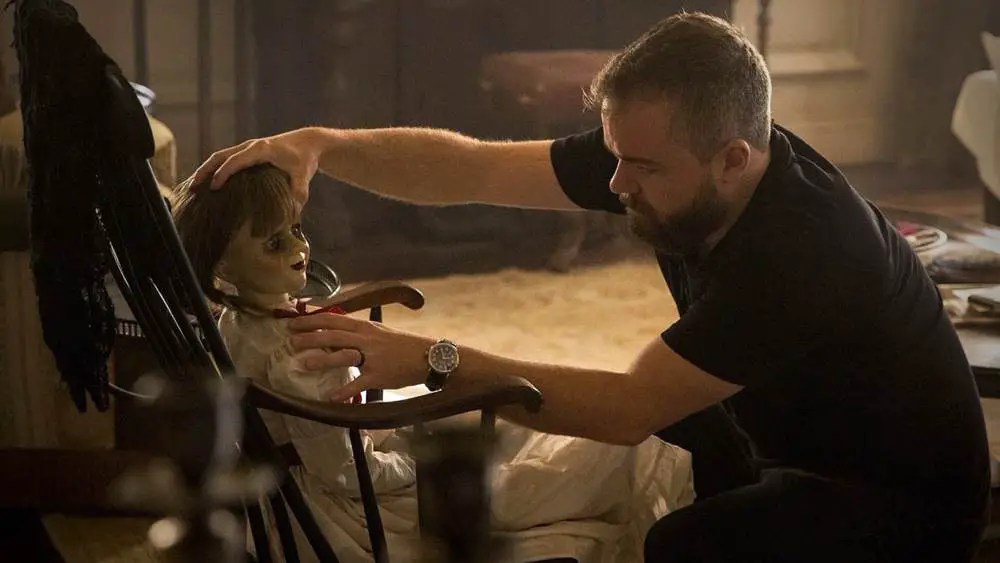
Plenty of filmmakers bypassed traditional school paths.
David F. Sandberg, known for Lights Out and Shazam!, taught himself everything from VFX to sound design through online resources. His YouTube videos explaining his process are studies in resourcefulness.
Issa Rae built her career from a web series, Awkward Black Girl, uploaded to YouTube. Her writing, tone, and voice were honed in public, not in a classroom.
Bo Burnham went from YouTube comedy to directing Eighth Grade, a nuanced feature praised for its emotional precision. His background in self-editing and composing gave him a unique eye behind the camera.
These stories aren’t flukes. They reflect a shift in how careers begin.
What Comes After You Learn? (Career Paths for Self-Taught Filmmakers)
Learning filmmaking online is only the beginning. Once you’ve built a solid foundation, the next step is applying that knowledge — and that usually means working on real sets, collaborating on small projects, or freelancing to gain experience.
Start with your portfolio. Even if it’s just short experiments or scene recreations, compile your best work into a tight 60–90 second reel. Organize your projects by role — directing, editing, camera work — so potential collaborators or employers can quickly see where your strengths lie.
Don’t stress if you’re just starting — here’s how to build a film portfolio even with no formal projects. Most entry-level film jobs value hustle and proof of ability over credentials.
Many beginners land their first gig as a production assistant (PA) on indie films, music videos, or commercial shoots. It’s not glamorous, but it’s where you see how sets really operate. Others begin by offering their services as freelance editors, camera operators, or even social media video creators for local businesses. Platforms like Backstage, Mandy.com, ProductionHUB, or even local Facebook filmmaking groups are useful starting points.
Don’t underestimate internships, especially with small production houses, even unpaid ones. They often offer more hands-on experience than big-name sets, and if you’re reliable, they may bring you back for paid roles.
Above all, keep creating. The more you shoot, cut, write, and collaborate, the more doors open — even without a degree.
Frequently Asked Questions
Q: Can I get a film job without a degree?
Yes. Portfolios and work samples carry more weight than academic credentials. Many production roles care more about what you can do than where you learned it.
Q: Do I need expensive gear to start?
No. Start with your phone. Focus on story, framing, and lighting. Gear helps, but ideas drive impact. For inspiration, here are 10 great films you didn’t know were shot on iPhones.
Q: How do I get feedback online?
Join communities like r/Filmmakers on Reddit, Stage32, or filmmaking Discord servers. Engage respectfully and offer feedback to others to build relationships.
Q: How much time should I spend per week?
Aim for 5–10 hours. More if you can. Consistency and deliberate practice matter more than marathon sessions.
When a Formal Program/Degree Makes Sense
Online learning is flexible—but it’s also solitary. If you crave in-person mentorship, studio access, or want to build industry contacts, a formal program can still be valuable.
Several institutions now offer remote options. These are costlier and more time-intensive, but they offer more structure and professional networking — especially valuable for careers in commercial film, TV, or academia.
Before enrolling, ask yourself what you’re hoping to gain that you can’t build independently.
If you’re still on the fence, read 5 Things To Know Before Enrolling In A Film School.
Conclusion: You Are Your Own Film School
And if you’re still with me — maybe that means this guide sparked something.
As for that friend? He never stopped shooting. One short film led to another. He taught himself lighting from YouTube, dissected scripts from Go Into The Story, and pieced together his first short film while working night shifts. Today, he’s shooting indie features — still self-taught, still scrappy, but with a voice that’s unmistakably his own.
You don’t need perfect gear. You don’t need permission. You just need to begin — and trust that every frame brings you closer to the filmmaker you’re becoming. All you need is taste, obsession, and the willingness to suck for a while.
Start small. Stay hungry. Shoot with what you have. Refer back to this guide when you’re feeling stuck, when you’re planning your next project, or just need to remember you’re not alone in this. Return here when you forget: all filmmakers start out with nothing but curiosity, nerve — and a camera that probably didn’t work right the first time. And for that final nudge, I’ll leave you with this:
“Perhaps it sounds ridiculous, but the best way to learn how to make a film is to make one.”
— Stanley Kubrick, “The Film Director as Superstar” (1970), interview with Joseph Gelmis
Handpicked Resources to Explore Next:

